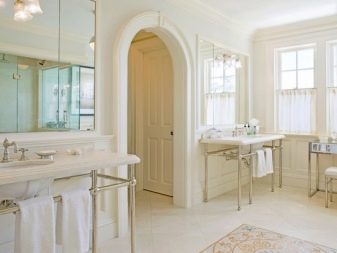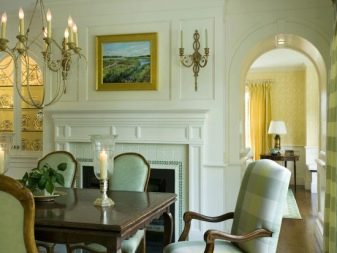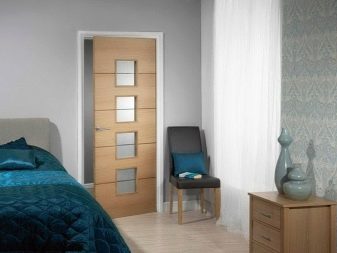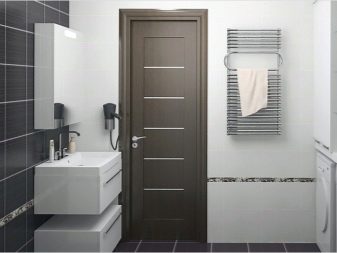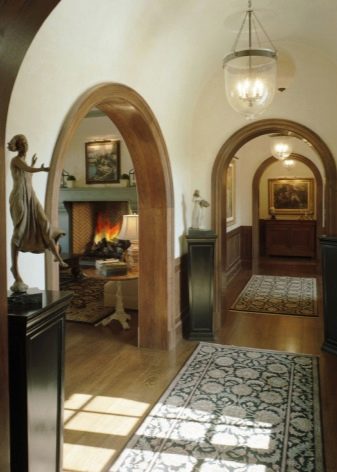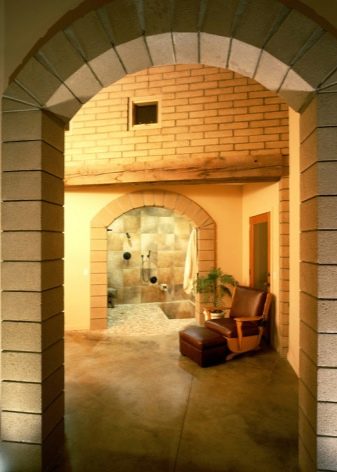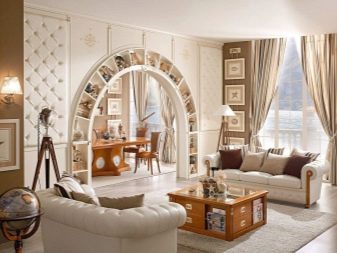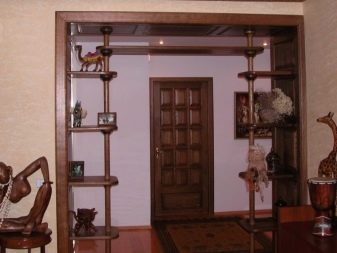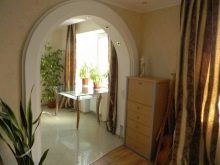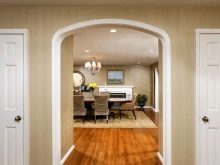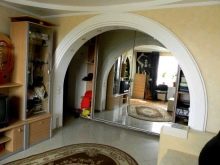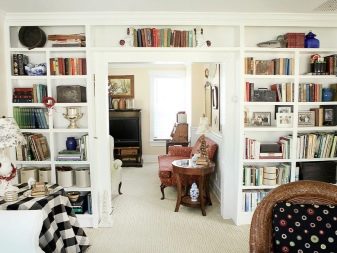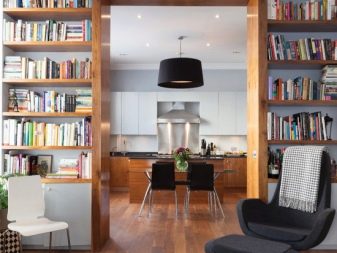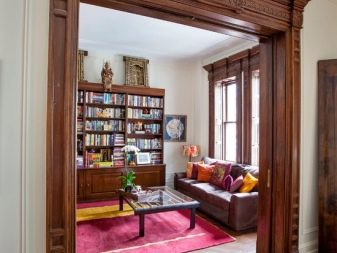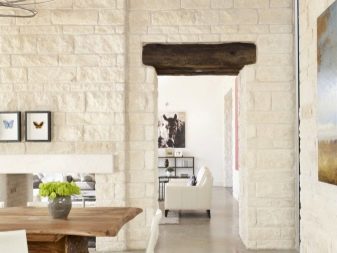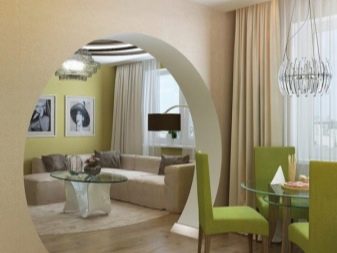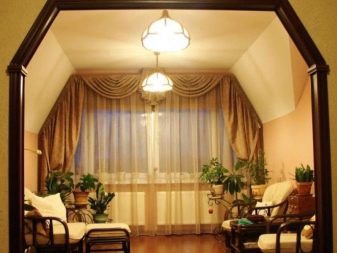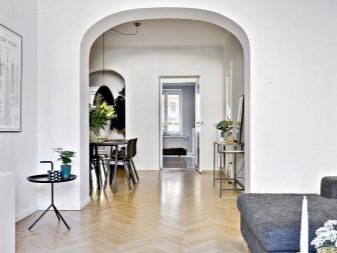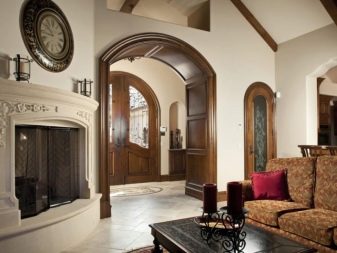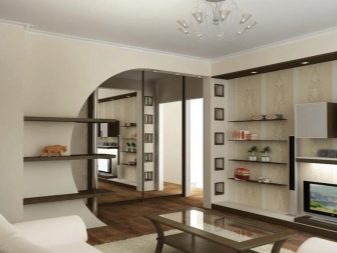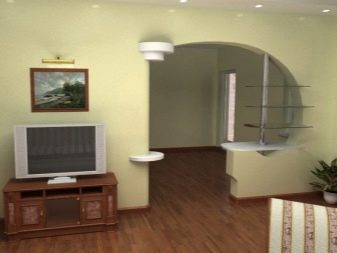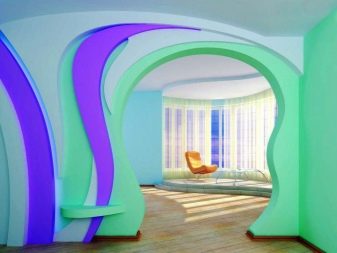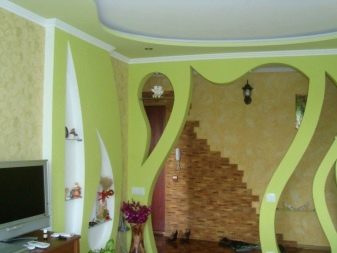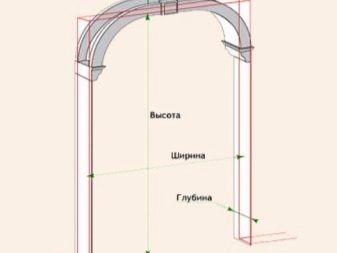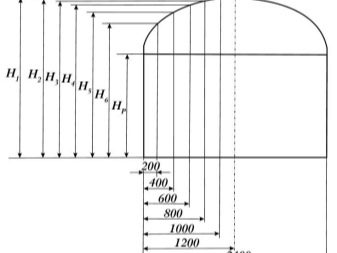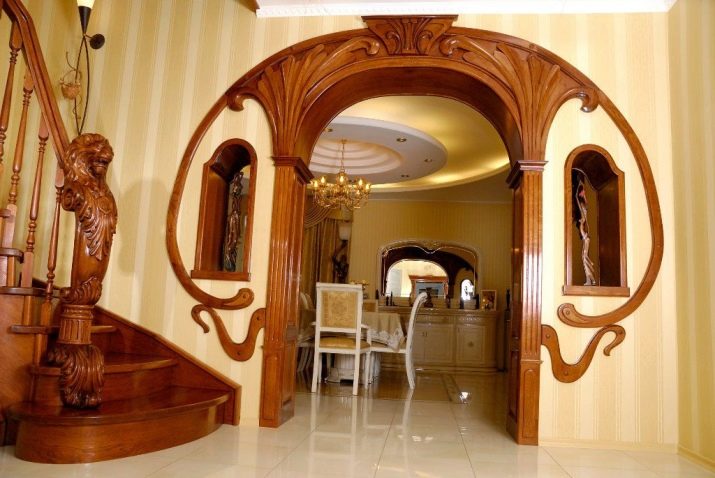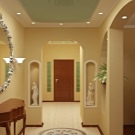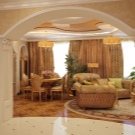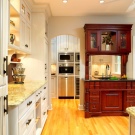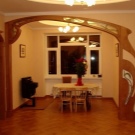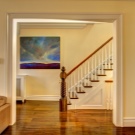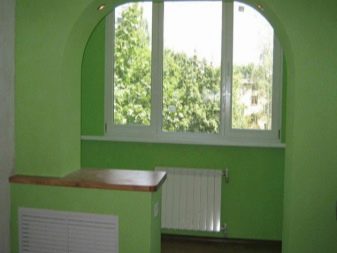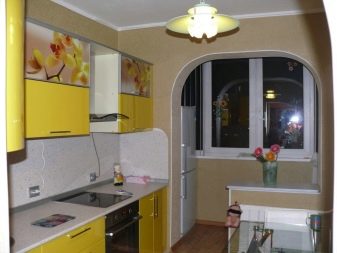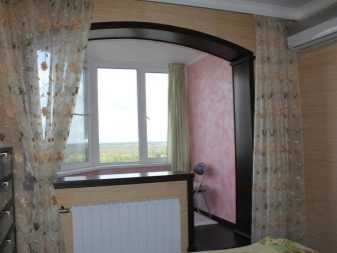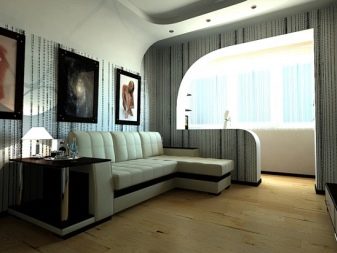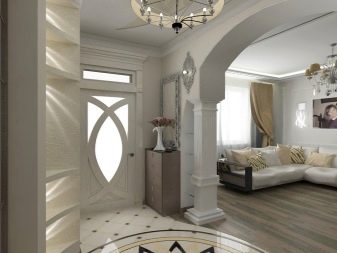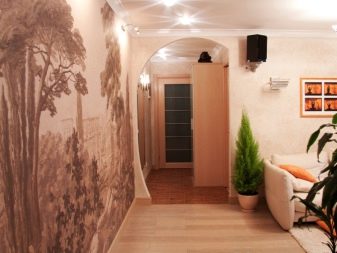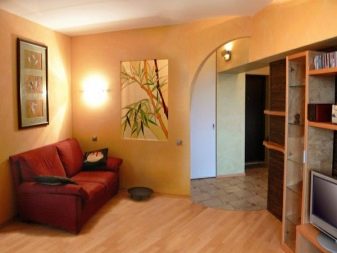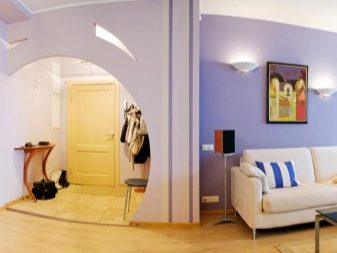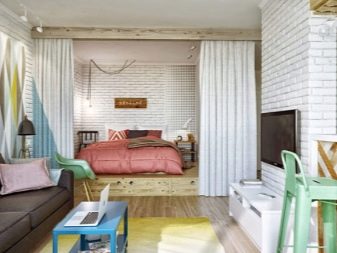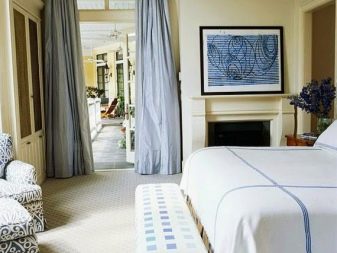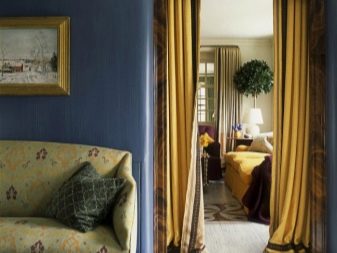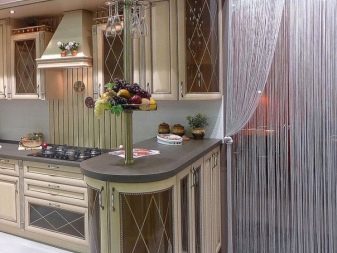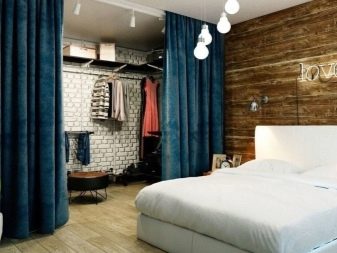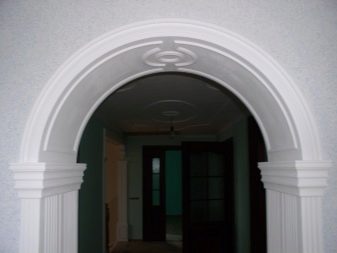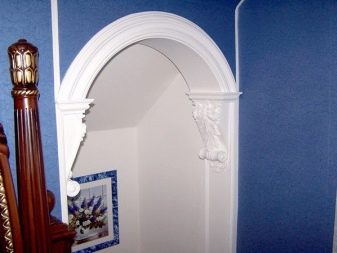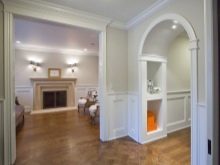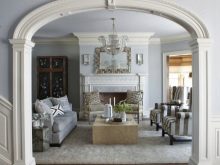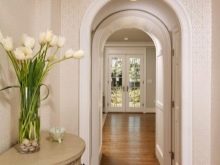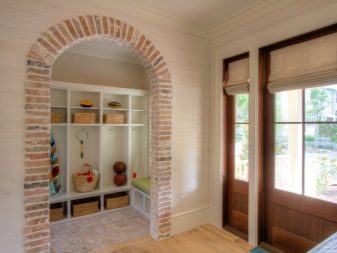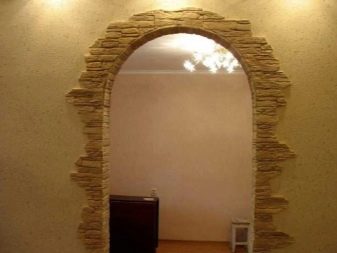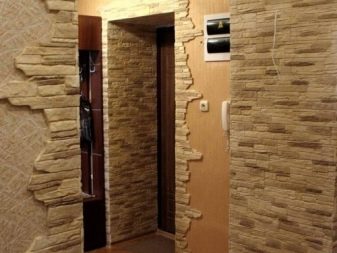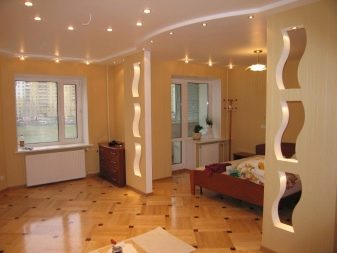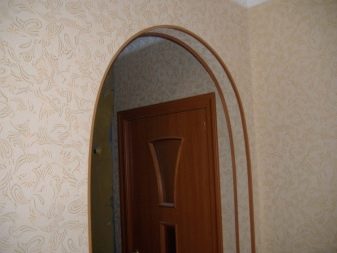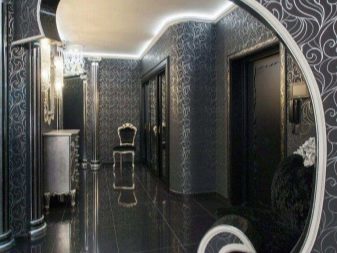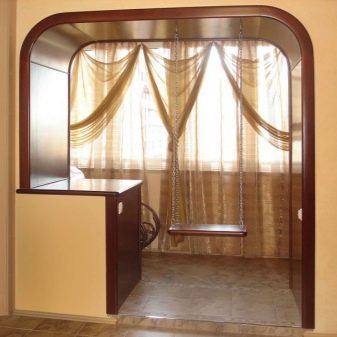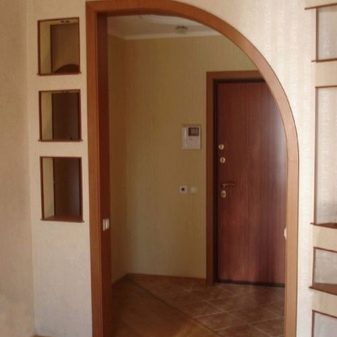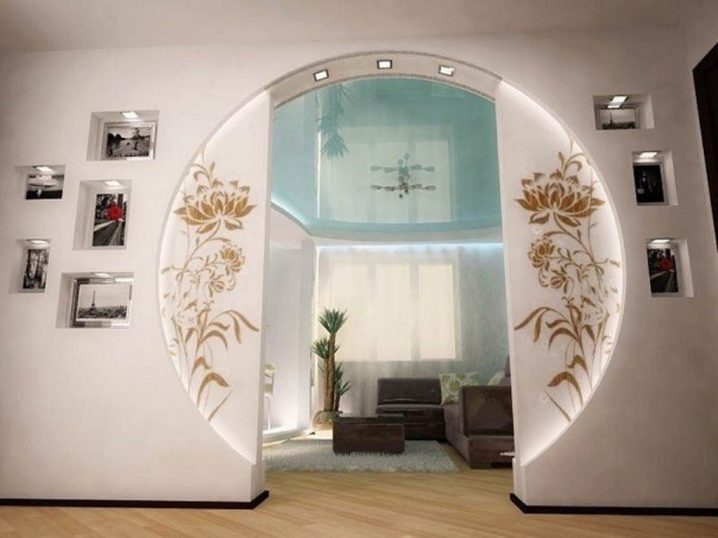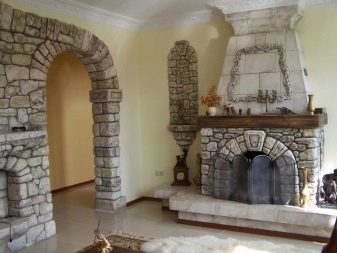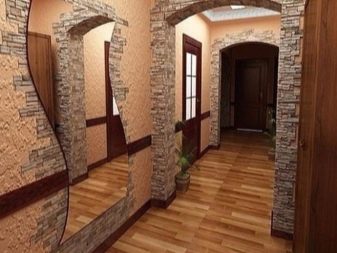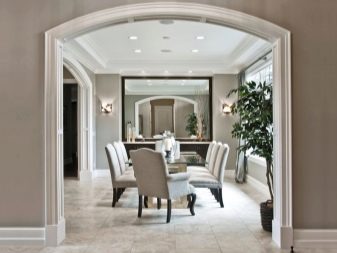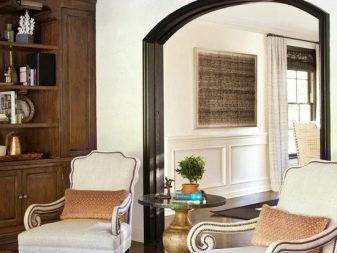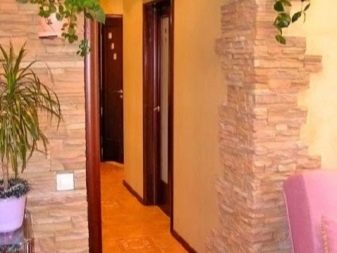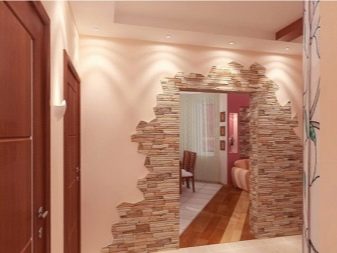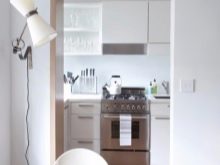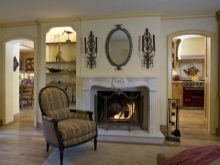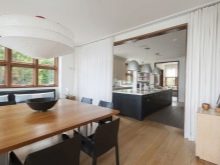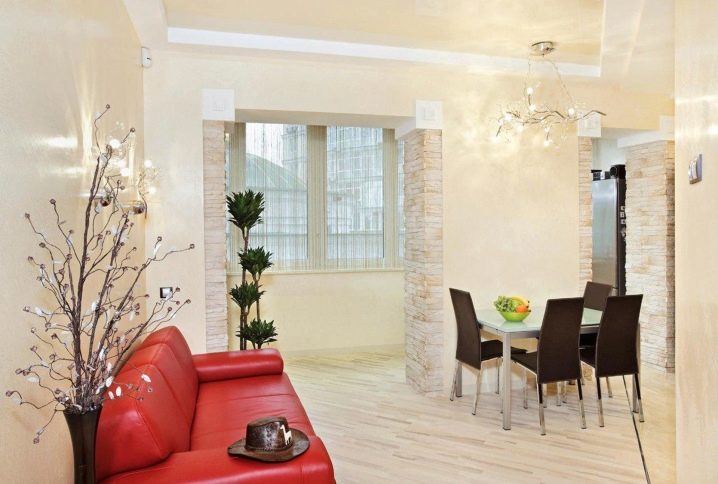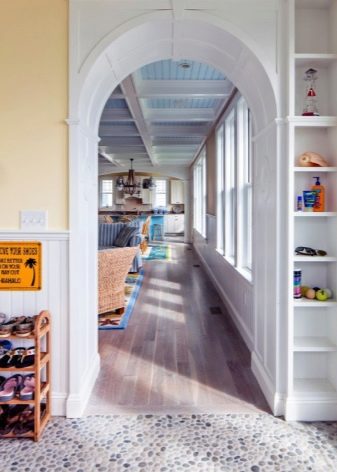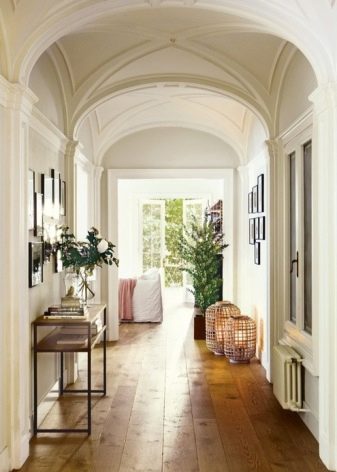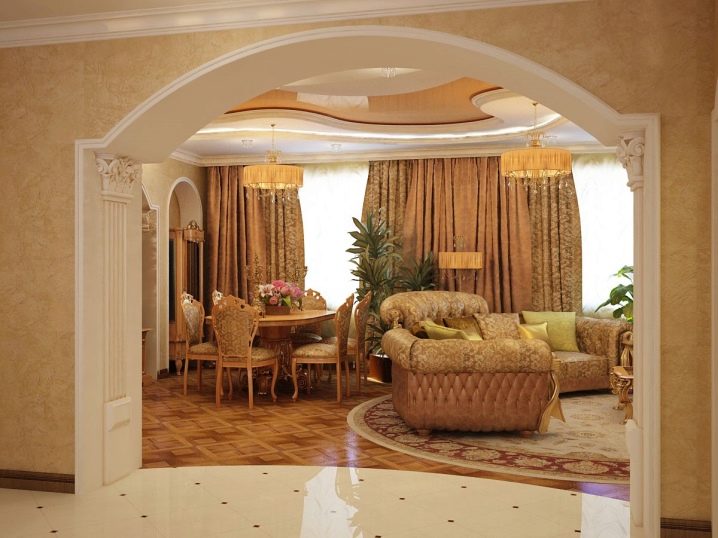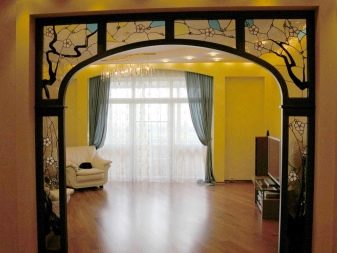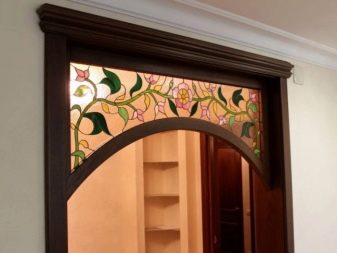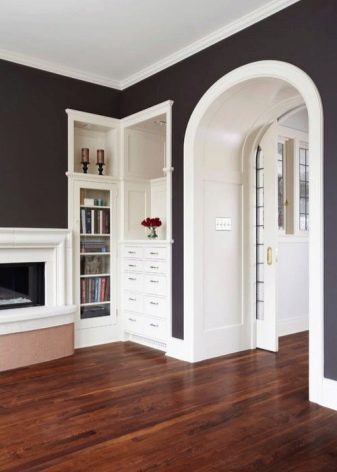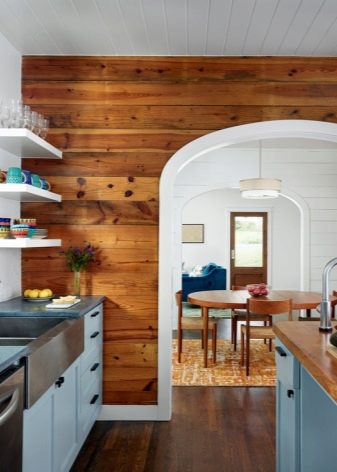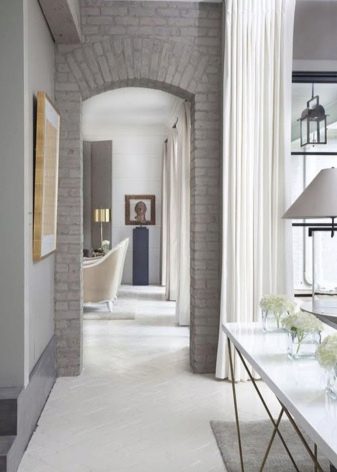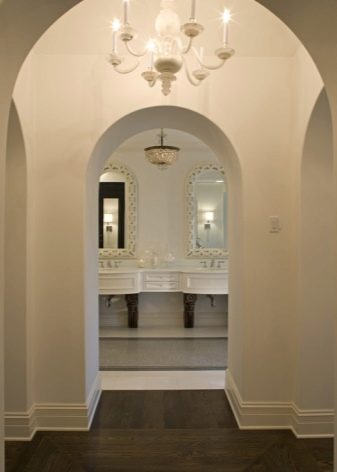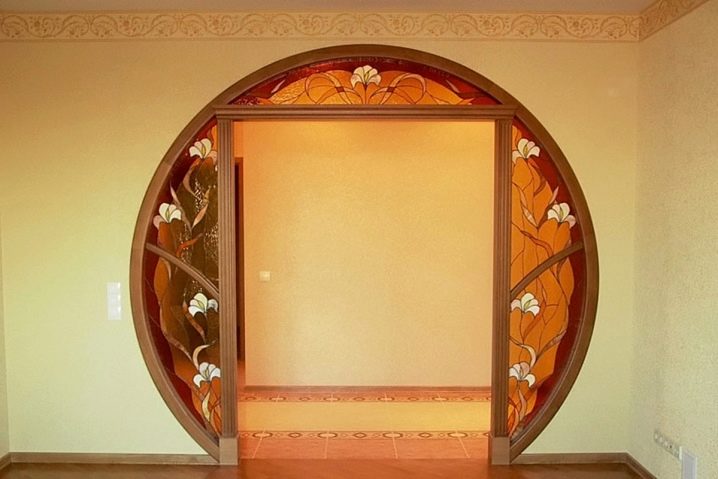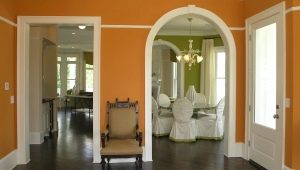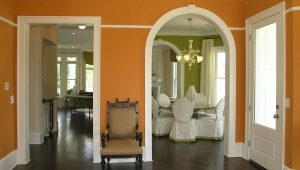Making a doorway without a door
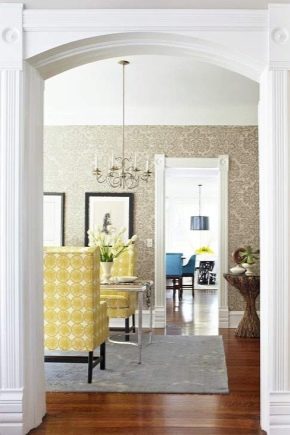
Making the opening without a door implies several features. Far from all materials are suitable for this type of finish, and you will have to handle it carefully enough with the selected options. Some designs can be created by hand, and the construction of the rest is best left to a professional.
Special features
The logical conclusion is that a doorway without a door is made completely without a doorframe. All decoration includes only the facing of the opening, which is performed using a variety of materials.
Making a doorless opening allows you to choose from a variety of forms, including both classic and fantasy interesting options.
Far from each room an opening without a door will look appropriate.There are some rooms that must have a door, and they include not only the toilet and bathroom. Bedroom, kitchen, study should be equipped with a full doorSince there are more rooms in these rooms than others, there is a need for privacy and intimacy.
However, every rule can be circumvented. For additional decoration of such openings are used curtains, muskets, screens. They allow you to create the illusion of separation of the room, while not completely replacing the door.
Refining an open doorway implies reliance on the integrity of the entire dwelling. As a rule, identical doorless openings are made in an apartment or house. This applies to both form and finish. They act as a connecting element, combining all the rooms into a single ensemble.
Speaking about the advantages that open openings have in comparison with the classical doorways, it is worth mentioning space saving. Each door occupies at least a square meter of usable area. When creating a doorless design, this problem disappears. From an aesthetic point of view, the aperture allows you to visually expand the space or expand the functional area of the room by combining it with auxiliary.A good example is the recent frequent unification of a balcony and a living room.
In some cases, doorless space looks much more attractive than the door, especially when it is beautifully decorated. For example, along the contour of such an opening often shelves are placed. The statuettes placed on them or other trifles beautifully frame the lumen, creating a unique atmosphere that cannot be repeated. Thus, sometimes an open doorway looks even more intimate than a thick oak door.
Finally, another important advantage is the creation of sufficient ventilation in the apartment. The air circulates better through the open space, and for small apartments, for example, like in the houses of Khrushchev's building, this factor is important - it allows you to fight stuffiness.
Creating several openings can completely change the original layout of the apartment, but in fact it is much cheaper than a complete redevelopment.
In addition, the opening is often allowed to create even in the supporting wall, so the options for a new apartment plan opens up much more.
Kinds
There are many different configurations of doorways without a door, which differ from each other not only in their form, but also in the material with which they are created. Along with the traditional raw materials, the latest developments in the field of design are also used.
The simplest design is ordinary rectangular span. Creating a rectangular opening is made very simple: the door frame is completely dismantled, then the wall surface is leveled along the contour. In the future, the resulting gap is simply painted or coated with a suitable material. There are a great many ways to finish, starting with the simple installation of wooden doborniki and ending with the creation of pompous stucco columns.
More popular construction arched constructs. For this, it is not necessary to expand the opening in the wall; in recent years, the idea of creating false arches has been actively used. In this case, angular elements made of polyurethane or drywall with rounded sides are installed in a rectangular span, and as a result, a full-fledged arch is obtained with much less money and labor.However, this method is not suitable for all dwellings: it is necessary that the opening has sufficient height.
There are several types of arches:
- Round arch. It is a classic interpretation and can be used in absolutely any room, regardless of the parameters, but there is one unwritten rule. The lower the ceiling, the wider the arch span should be.
- Trapezoidal span. It is created from straight lines and can be called an arch only conditionally. Designers are not advised to use this form because of the stable association with the funeral accessories - the coffin.
- Triangular arch. There are a huge number of subspecies of triangular arches: keeled, pointed u-shaped, tudor. Similar elements came to modern design from the Middle Ages, and they are used preferably in high, spacious rooms.
More and more often, people refuse to create ordinary classical openings in favor of fantasy asymmetrical ones.
They can be made only in plasterboard walls-partitions. Asymmetrical openings can be of any shape, as well as be supplemented with all sorts of auxiliary details: shelves,niches, lighting. This design acts as a bright element and sets the tone for the whole appearance of the room. Eyeing myself Asymmetrical opening well helps to hide possible flaws in the repair of the room.
Dimensions
Balancing the proportions of the premises in the apartment is possible with the help of doorways without doors. Depending on whether the opening is wide or narrow, high or low, the impression will vary.
For rooms with low ceilings is strictly not recommended to mount narrow spans. Visually, they will make the room tiny and uncomfortable. It is better to choose a wide option that will visually expand the area of the room, add air and light to it. This concerns not only arched openings, but also rectangular.
The optimal height also depends on the initial proportions of the room. If you want to combine the two rooms with the help of the lumen, it is recommended to make it almost the height to the ceiling. Ordinary span, serving only as an alternative to the door, should be made much lower, but its height should not be less than 2 m. In the case of arches, this figure grows by at least 30 cm.This is caused not so much by aesthetic rules as by security requirements: a person can hit the upper narrow part of the arch in the dark.
In the construction of asymmetric structures should be guided by the following rule: the more intricate the shape, the wider the opening should be. Too much concentration of monograms and other elements on a small space will overload the view, making the design unnecessarily elaborate and cumbersome. As a result, instead of a spectacular accent, you will get a tasteless option that you will soon get tired of.
Thus, the size of the doorway is largely determined by the characteristics of the room itself, rather than the chosen form.
Remember that very wide doorways are best done using any texture, for example, embossed moldings. If you use an ordinary smooth lining, the gap will be “lost” against the general background of the room and, from an aesthetic point of view, will not look particularly harmonious.
In various rooms
In most cases, the advisability of installing a doorless doorway is obvious, however, sometimes the refusal of the door is extremely undesirable. Among the rooms in which it is best to leave the door, can be attributed to the kitchen.This is especially true in small apartments, where a strong kitchen smell will be especially annoying. It is not always pleasant when aromas are felt in the living room or bedroom.
The old boring interior of the living room can be changed beyond recognition, at the same time competently expanding the usable area. If you abandon the separate balcony block and the door to the balcony, you can make the living room lighter. The balcony will certainly need to be furnished in a style similar to the living room, since the rooms, combined with a doorless view, should be perceived as a single whole.
You can often come across cases when the door is abandoned. between the hallway and dressing room. Since both of these rooms are rather small and cramped, such a move helps to hide this fact, allowing people to feel freer.
In small apartments, the doors between the hallway and the living room are abandoned, especially if the apartment is a studio. So the whole area is perceived as a whole, with the result that the dwelling seems larger.
In cases where such a small apartment has low ceilings, it is better not to choose an arched shape as the opening.It is much more logical to stay on the classic rectangular span.
Quite rarely refuse the door to the bedroom, but completely leave the entrance "defenseless" are not solved. Come to the rescue thick curtains or screenswhich perfectly protect the intimacy of the room. If necessary, they can be easily and quickly dismantled. An interesting solution is to use curtains with pickups: they can be completely closed at night, and in the daytime they will serve as a beautiful frame for the opening.
How to arrange?
The opening check is made by different materials and in different techniques. Interior span can decorate their own hands, and you can contact the professionals who create a complex and unique decor.
A good idea is to decorate the doorway with curtains.
Decorative curtains play the same role as the door psychologically, but it takes up much less space. If desired, the curtains can be removed without any problems or replaced by others, while the type of construction of the opening will not be affected (for example, if you just remove the door leaf, there will remain hinges on the span that do not look very attractive).
Another option, how to decorate a doorway without a door, is to use additional design elements - various stucco panels. With their help, it will be possible to improve any clearance, regardless of how smooth the walls are and in what colors the opening is made. Finishing is extremely simple and often performed completely independently.
With the help of stucco there is an opportunity to finish the openings in various styles. For example, you can make a classic arch with columns and heavy figured elements. If you add gilt, you can completely recreate the spirit of baroque or classical. For modern interiors, it is more appropriate to use simple embossed moldings with geometric patterns, for example, embossed grooves. If in the first case the choice was in favor of pilasters and capitals, in the second case they should be avoided.
Stucco can be found quite rarely, it has practically gone out of use lately. This is due to the relatively small size of modern apartments, because in small spaces, intricate designs look ridiculous.You should not completely abandon the stucco elements: some of them can help in the expansion of the room.
Also for the design of door openings without doors often use of artificial stone laying, clinker tiles or drywall.
Materials
A door opening without a door can be done with a variety of materials. The simplest solution is to paint the lumen or glue it with the same wallpaper as the walls. However, there is one “but”: for this, only ideally smooth walls are suitable, otherwise the whole structure will not look neatly enough and made as if hastily.
Another option is to make a box of dobori and put in a gap or sheathe it with MDF panels. And in that, and with another case, you will get a wooden gap, which looks stylish and can be harmoniously integrated into almost any interior.
Framing the opening is best done with wood of valuable breeds or their imitation, since such solutions look the best way.
It is also possible to sheathe the lumen with plasterboard. Drywall - a truly unique material.With its help, it is possible to form a structure of practically any configuration, adding it with elements from other light materials, for example, polyurethane.
Plasterboard simple opening can be easily done independently, and it does not take much time, and the effect will please.
Often the lumens are laid out by imitation stone or clinker tiles. The brick tile imitates a brick, at the same time it weighs several times less. They produce tiles of different shapes: there are classic elements as well as special corner ones. There is a wide variety of dimensions on the market, however, medium-sized tiles are the most popular. The seams between the tiles are usually overwritten with a compound that exactly mimics the main wall covering.
Artificial stone looks more interesting than clinker tiles. There are imitations of various materials: limestone, marble, malachite and many others. This material has many advantages: such lining looks expensive, harmonizes perfectly with other finishing materials, has a long service life and wear resistance, and is also very easy to clean.The laying of such material can be carried out either in a geometrically thoughtful order, or randomly - both versions look equally well.
Both tile and stone are attached either to tile adhesive (when the walls under them are not well aligned), or to liquid nails (if the walls have a perfectly flat surface).
To learn how to make a decorative arch, lined with gypsum stone and bas-reliefs, see the next video.
Options in the interior
A fairly simple doorway with a slightly curved edge adds pompousness and grandeur to the room. Its unusual structure is made in fairly moderate proportions: straight lines are used, there is no complex decor. A virtually square shape contributes to the visual preservation of the proportions of the room, without creating any visual illusions.
The use of natural materials is encouraged when creating a doorless design. Wood and raw stone harmonize well with each other, despite the fact that the tree is selected valuable breed, and the stone - the most common. The game of contrasts deserves special attention: first,Contrasting wood and stone are used, and secondly, the smooth edge of the wooden platband is adjacent to the ragged edges of the masonry.
The easiest way to solve this is the processing of the edges of the opening, in which the surface is simply aligned, and then painted to the color of the walls.
But simply - does not mean bad. Often for owners such a solution seems too boring, and in such cases they use wood or plastic cladding. In this example, a material is chosen that completely repeats the texture and color of the floor covering.
It is unusual to see a combination of stucco and raw stone, but such decisions have the right to exist. For the optimal selection of materials requires remarkable experience and artistic flair, otherwise the result can be very disappointing.
Arches often combine hallways and lounges or living rooms. In such cases, they are more likely to act as a conditional means of zoning a room than actually helping to separate these spaces. Thus they solve two problems at once: first, they expand the small and not always cozy hallway, and secondly, they allow guests to feel right at the door in a hospitable house.
An aperture of complex shape, supplemented by columns and stucco, it is most appropriate to use in living rooms. As is known, the use of stucco elements hints at the correlation of a room with any style implying such details (for example, Rococo, Baroque, Venetian, and others). Wide openings look awkward in small roomsso, having decided on a similar step, be convinced of its relevance.
In this case, a false arch is recreated with wooden frames and stained glass. The design helps to further expand the room, since glass inserts at the subconscious level are not considered as an alternative to walls. Please note that the window opening is made in a similar form, but the entrance to the room is the accent of the whole composition.
Ordinary arch, made in a contrasting color, can set the tone for the whole situation. She often settles herself according to the rest of the room. In this case, all the elements agree well with each other: baseboards, arch, cabinets, fireplace. Facing the outer edge of the structure follows a simple geometric pattern on the ceiling plinths, thereby making the room become one.
In some cases, the arches are arranged directly during construction.
If you know for sure that you want to equip a doorless doorway in a certain place, try to reconcile this point at the construction stage of the house. In this case, you will save yourself from further worries in the future, such as obtaining permission for restructuring, coordination with various instances, directly arranging the opening, and so on.
In recent years, when planning an interior, designers have increasingly resorted to such an unusual solution as arches of unconventional forms. They can be round, in the form of keyholes, with shelves or even with a bar. It is most convenient to recreate such constructions from drywall, as it is the most plastic, does not crumble and does not break when creating small curls and other details.
